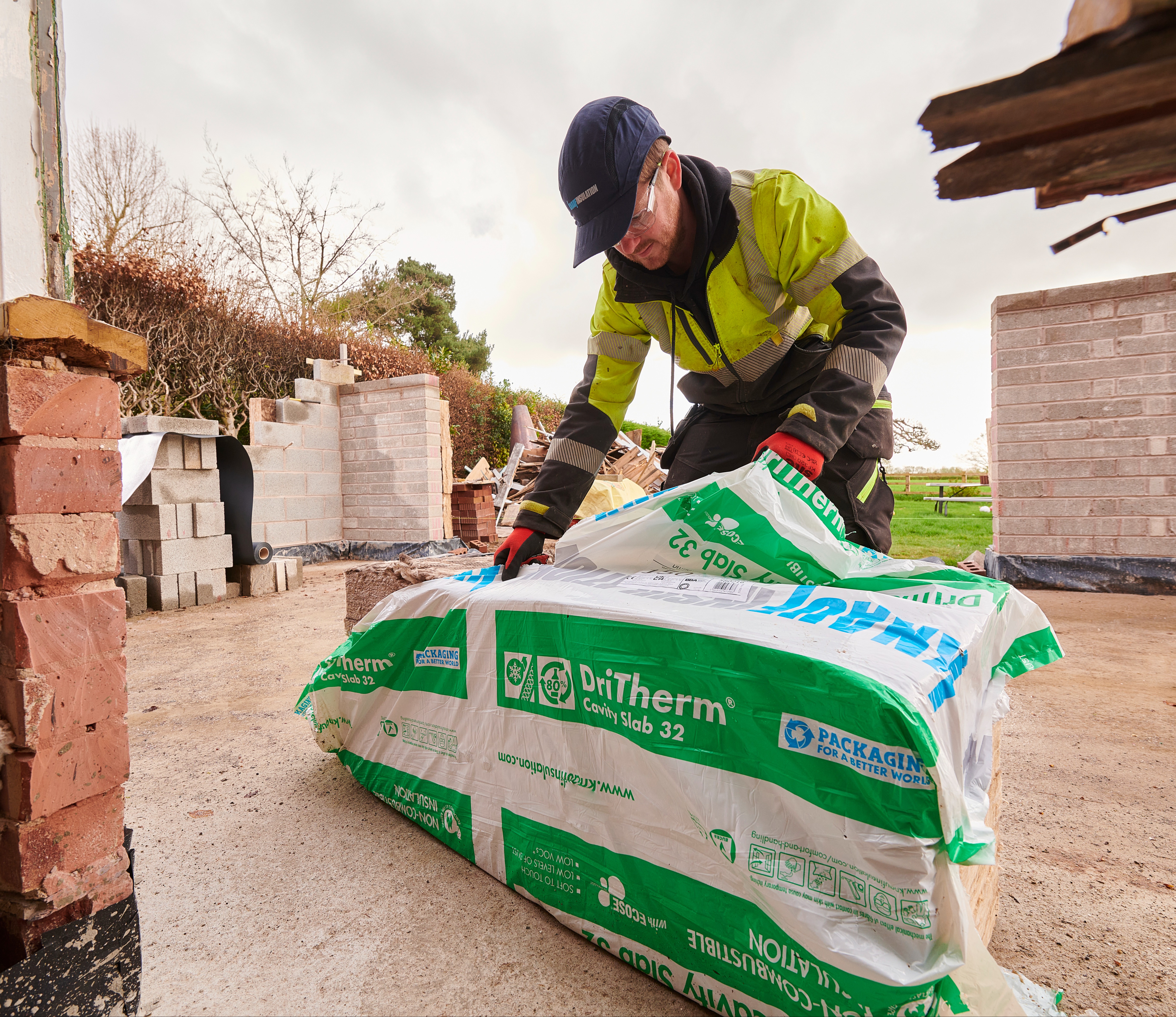Knauf DriTherm 32: A Future-Proof Solution for Building Regulations and Sustainability
Adapting to future requirements, with wider cavities
As we get closer to the Future Homes Standard, guidance for designing new homes is becoming stricter. Knauf Insulation discuss the role wider wall cavities play in preserving design flexibility while preparing for the tighter regulations to come.
The latest updates to Approved Document L have elevated the thermal performance standards for new homes, and this is due to tighten further in 2025. The Building Regulations England Part L (BREL) report now requires photographic evidence of thermal continuity and quality insulation. Amidst these evolving requirements, housebuilders need solutions they can rely on to meet current and future standards. That’s where wider cavities can help.

Thermal performance that delivers
When specifying insulation for improved energy efficiency, lambda values are a good place to start, as they give an indication of thermal performance. However, real-world performance also relies on correct installation. For example, rigid board insulation must be cut and taped with precision, and it won’t sit flush against a cavity wall unless it is perfectly uniform and flat. All this can lead to unintentional air gaps, which undermine thermal performance.
Designing with 100mm cavities restricts your insulation options but 150mm cavities allow for the use of materials like mineral wool insulation, which is more flexible. It adapts to slight imperfections in the substrate and ‘knits’ together, minimising air gaps and maximising thermal performance.
Fire safety
Thermal performance isn’t the only area where standards are becoming more stringent – fire safety and sustainability are increasingly prioritised in new homes. Approved Document B has tightened the guidance on using combustible materials and London Plan guidance now requires major development proposals to be submitted with a Fire Statement confirming that no combustible materials will be incorporated in the development’s external walls. There is a clear trend towards non-combustibility which is facilitated by the use of wider cavities and non-combustible products like Knauf Insulation’s DriTherm® Cavity Slab 32, which has a Euroclass A1 reaction to fire classification.
Example whole-house approach
A recent survey of housebuilders revealed that 41% of participants have already transitioned to 150mm cavities for new homes, and just over a quarter are considering it, indicating a shift towards wider cavities as standard practice. Here’s an example of how it can be done.
The energy efficiency of a home is measured as a whole, so increasing the thermal performance of your fabric, allows other elements to be chosen based on project-specific priorities. For instance, a four-bedroom, detached house could use 150mm of DriTherm® Cavity Slab 32 wall insulation with 500mm of Loft Roll 44 in the loft. With the right fabric in place, the design could also include double-glazed windows, an air source heat pump, and heating controls that use time and temperature zone control.
Designing with 150mm cavities helps you to meet current regulatory demands whilst remaining adaptable to future changes. And it allows you to choose the materials and design elements that work best for your project.
If you would like to enquire about Knauf DriTherm so that you can build for now and the future, contact your local branch.

